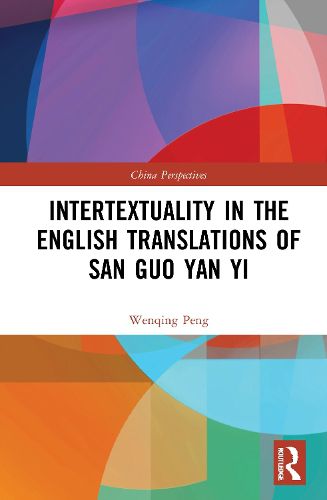Readings Newsletter
Become a Readings Member to make your shopping experience even easier.
Sign in or sign up for free!
You’re not far away from qualifying for FREE standard shipping within Australia
You’ve qualified for FREE standard shipping within Australia
The cart is loading…






San Guo Yan Yi is one of the best-known classic Chinese novels in the English-speaking world. The earliest English translation came out in 1820, while a range of further translations have been produced over the past two hundred years. How do the different versions relate to each other?
This volume examines the intertextual relations between the English translations of San Guo Yan Yi. Intertextuality refers to the interdependence of texts in relation to one another. Focusing on the perspectives of impact, quotation, parallels and transformation, the author compares a range of the translated versions, including two full-length translations and over twenty excerpted renderings and partial adaptations since the 1820s. She discovers that excerpted translations are selected to fit the translators' own narrations, and are adapted to many genres, such as poetry, drama, fairytales, and textbooks. Moreover, the original text, translated texts and other related English works are interconnected in one large network, for which intertextuality offers an ideal basis for research.
Students and scholars of Chinese literature and translation studies will benefit from this book.
$9.00 standard shipping within Australia
FREE standard shipping within Australia for orders over $100.00
Express & International shipping calculated at checkout
San Guo Yan Yi is one of the best-known classic Chinese novels in the English-speaking world. The earliest English translation came out in 1820, while a range of further translations have been produced over the past two hundred years. How do the different versions relate to each other?
This volume examines the intertextual relations between the English translations of San Guo Yan Yi. Intertextuality refers to the interdependence of texts in relation to one another. Focusing on the perspectives of impact, quotation, parallels and transformation, the author compares a range of the translated versions, including two full-length translations and over twenty excerpted renderings and partial adaptations since the 1820s. She discovers that excerpted translations are selected to fit the translators' own narrations, and are adapted to many genres, such as poetry, drama, fairytales, and textbooks. Moreover, the original text, translated texts and other related English works are interconnected in one large network, for which intertextuality offers an ideal basis for research.
Students and scholars of Chinese literature and translation studies will benefit from this book.